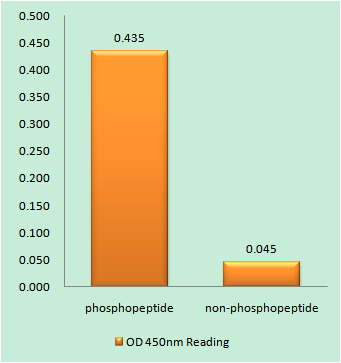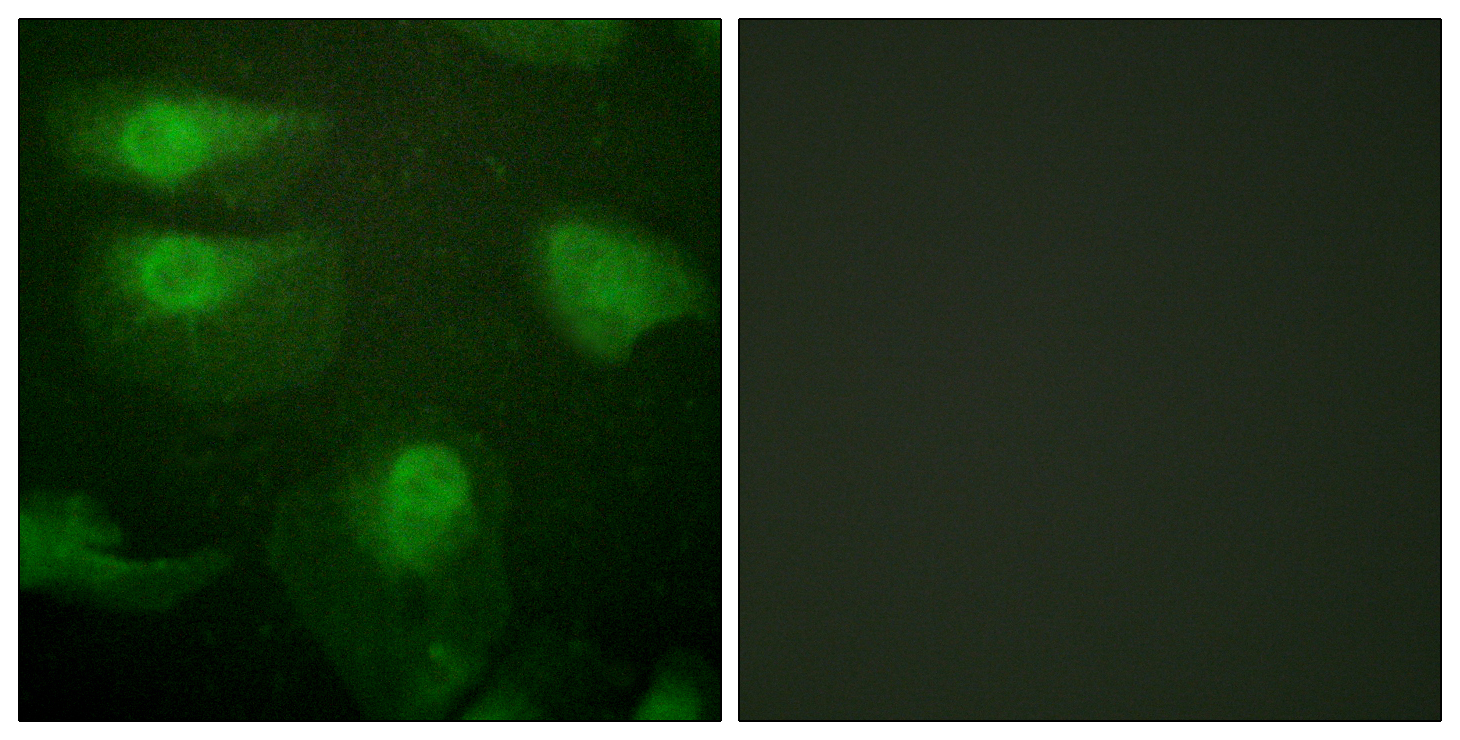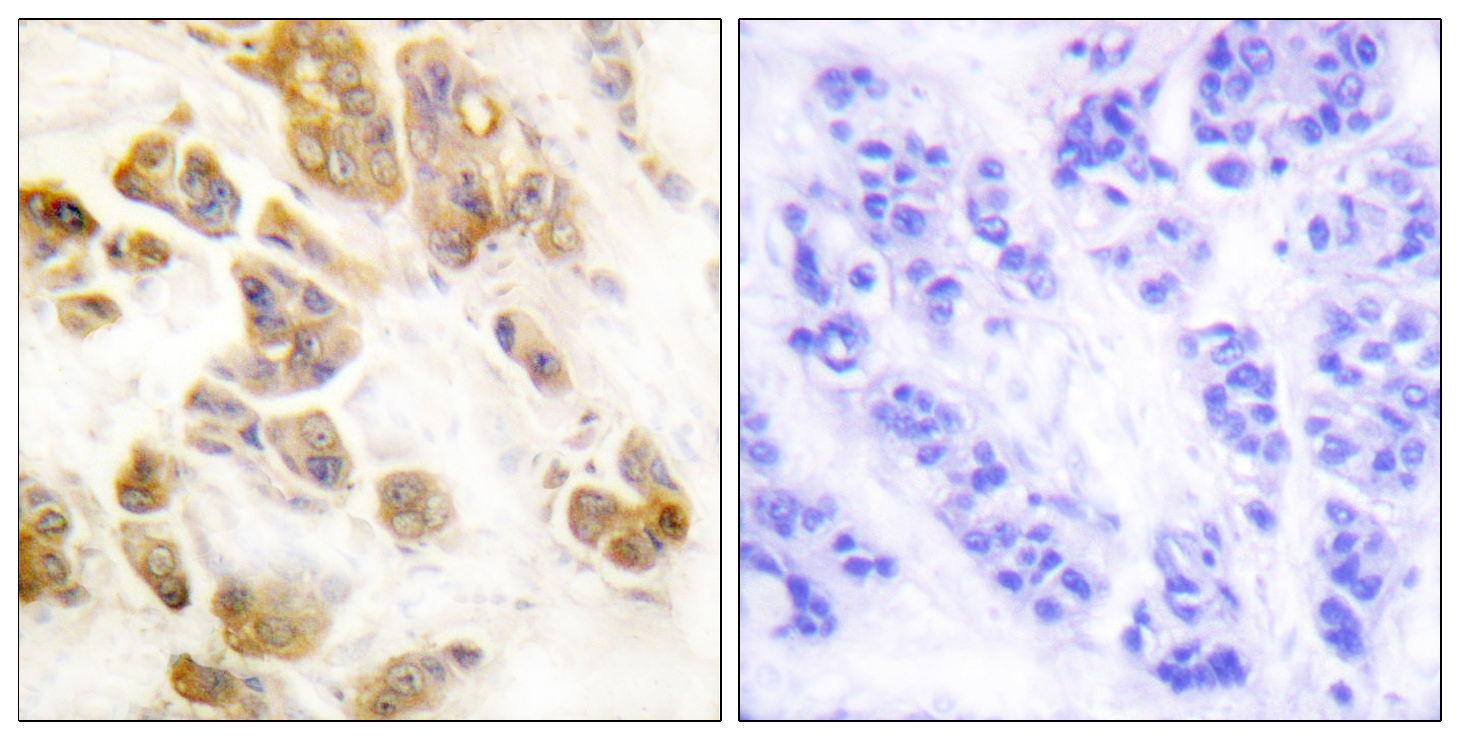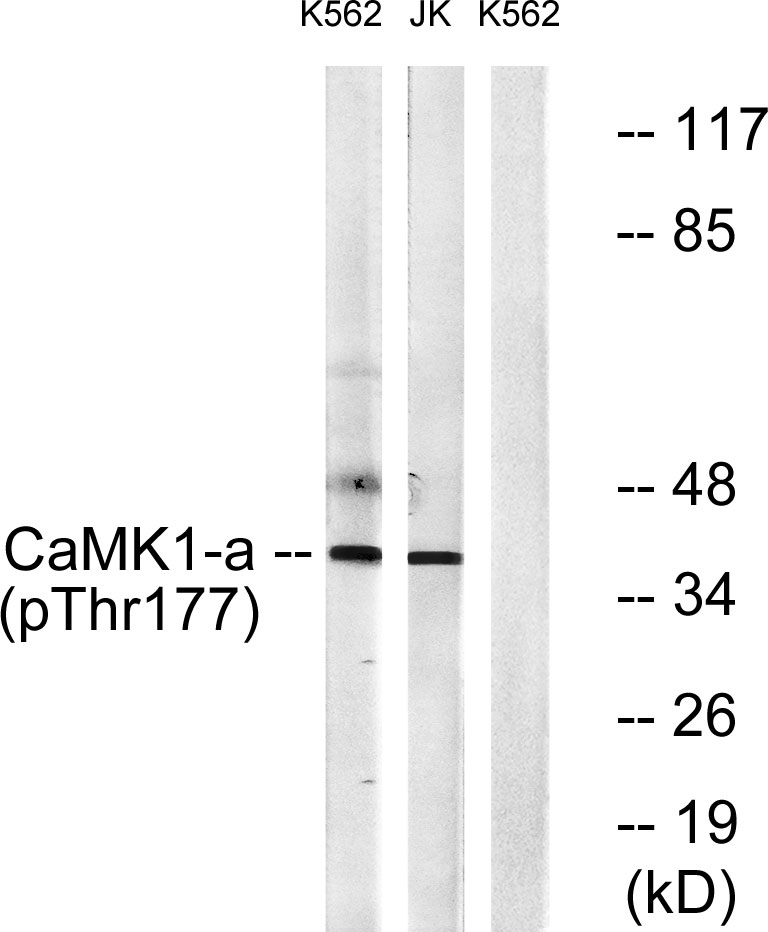CaMKIα (phospho Thr177) Polyclonal Antibody
- Catalog No.:YP0913
- Applications:WB;IHC;IF;ELISA
- Reactivity:Human;Mouse;Rat
- Target:
- CaMKIα
- Fields:
- >>Calcium signaling pathway;>>Oxytocin signaling pathway;>>Aldosterone synthesis and secretion;>>Glioma
- Gene Name:
- CAMK1
- Protein Name:
- Calcium/calmodulin-dependent protein kinase type 1
- Human Gene Id:
- 8536
- Human Swiss Prot No:
- Q14012
- Mouse Gene Id:
- 52163
- Mouse Swiss Prot No:
- Q91YS8
- Rat Gene Id:
- 171503
- Rat Swiss Prot No:
- Q63450
- Immunogen:
- The antiserum was produced against synthesized peptide derived from human CaMK1-alpha around the phosphorylation site of Thr177. AA range:143-192
- Specificity:
- Phospho-CaMKIα (T177) Polyclonal Antibody detects endogenous levels of CaMKIα protein only when phosphorylated at T177.
- Formulation:
- Liquid in PBS containing 50% glycerol, 0.5% BSA and 0.02% sodium azide.
- Source:
- Polyclonal, Rabbit,IgG
- Dilution:
- WB 1:500 - 1:2000. IHC 1:100 - 1:300. IF 1:200 - 1:1000. ELISA: 1:5000. Not yet tested in other applications.
- Purification:
- The antibody was affinity-purified from rabbit antiserum by affinity-chromatography using epitope-specific immunogen.
- Concentration:
- 1 mg/ml
- Storage Stability:
- -15°C to -25°C/1 year(Do not lower than -25°C)
- Other Name:
- CAMK1;Calcium/calmodulin-dependent protein kinase type 1;CaM kinase I;CaM-KI;CaM kinase I alpha;CaMKI-alpha
- Observed Band(KD):
- 41kD
- Background:
- Calcium/calmodulin-dependent protein kinase I is expressed in many tissues and is a component of a calmodulin-dependent protein kinase cascade. Calcium/calmodulin directly activates calcium/calmodulin-dependent protein kinase I by binding to the enzyme and indirectly promotes the phosphorylation and synergistic activation of the enzyme by calcium/calmodulin-dependent protein kinase I kinase. [provided by RefSeq, Jul 2008],
- Function:
- catalytic activity:ATP + a protein = ADP + a phosphoprotein.,domain:The autoinhibitory domain overlaps with the calmodulin binding region and interacts in the inactive folded state with the catalytic domain as a pseudosubstrate.,enzyme regulation:Activated by Ca(2+)/calmodulin. Binding of calmodulin results in a conformational change that generates functional binding sites for both, substrate and ATP, and thus releaves intrasteric autoinhibition. Must be phosphorylated to be maximally active. Phosphorylated by CAMKK1 or CAMKK2.,function:Calcium/calmodulin-dependent protein kinase belonging to a proposed calcium-triggered signaling cascade involved in a number of cellular processes like transcriptional regulation, hormone production, translational regulation, regulation of actin filament organization and neurite outgrowth. Involved in calcium-dependent activation of the ERK pathway (By si
- Subcellular Location:
- Cytoplasm . Nucleus . Predominantly cytoplasmic. .
- Expression:
- Widely expressed. Expressed in cells of the zona glomerulosa of the adrenal cortex.
- June 19-2018
- WESTERN IMMUNOBLOTTING PROTOCOL
- June 19-2018
- IMMUNOHISTOCHEMISTRY-PARAFFIN PROTOCOL
- June 19-2018
- IMMUNOFLUORESCENCE PROTOCOL
- September 08-2020
- FLOW-CYTOMEYRT-PROTOCOL
- May 20-2022
- Cell-Based ELISA│解您多样本WB检测之困扰
- July 13-2018
- CELL-BASED-ELISA-PROTOCOL-FOR-ACETYL-PROTEIN
- July 13-2018
- CELL-BASED-ELISA-PROTOCOL-FOR-PHOSPHO-PROTEIN
- July 13-2018
- Antibody-FAQs
- Products Images

- Enzyme-Linked Immunosorbent Assay (Phospho-ELISA) for Immunogen Phosphopeptide (Phospho-left) and Non-Phosphopeptide (Phospho-right), using CaMK1-alpha (Phospho-Thr177) Antibody

- Immunofluorescence analysis of HeLa cells, using CaMK1-alpha (Phospho-Thr177) Antibody. The picture on the right is blocked with the phospho peptide.

- Immunohistochemistry analysis of paraffin-embedded human breast carcinoma, using CaMK1-alpha (Phospho-Thr177) Antibody. The picture on the right is blocked with the phospho peptide.

- Western blot analysis of lysates from K562 cells treated with insulin 0.01U/ml 15' and Jurkat cells treated with insulin 0.01U/ml 15', using CaMK1-alpha (Phospho-Thr177) Antibody. The lane on the right is blocked with the phospho peptide.



